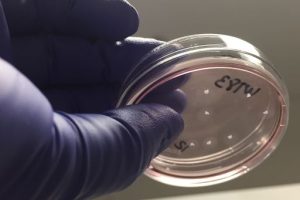Fraunhofer Institute for Microelectronic Circuits and Systems IMS has had a version of its 32bit AIRisc RISC-V microcontroller intellectual property certified by by TÜV SGS to the ISO 26262 ASIL-D automotive safety standard. Called AIRisc-Safety, it can now be licensed from the organisation, which also offers customised versions for asic and FPGA integration. “Certification means that industrial customers directly receive a ...
Medical Electronics
Content related to medical electronics
Excellence in Product Design Award (medical)
Winner onsemi – EZAIRO 8300 AI-enabled audio processor The EZAIRO 8300 is an advanced audio processor with six programmable processing cores for wireless-enabled audio applications. It has a high degree of parallelism and flexibility and offers high fidelity operation, low power consumption, the flexibility to maximise performance against power consumption and supports Bluetooth Low Energy connectivity. The judges deemed ...
Mains power adaptors for industrial and medical
TDK has announced 70 and 160W mains power adaptors for medical and industrial use. DTM70 measures 120 x 52 x 31mm and is available with 12V, 15V, 18V, 24V, 36V or 48V output DTM160 measures 150 x 70 x 38mm and is available with 12V, 24V, 36V or 48V outout Both series are available in Class I versions with a ...
Quiet 800W mains PSU suits BF-rated medical applications and test
TDK-Lambda has released a 1U high modular ac-dc power supply series from which “the product’s low acoustic noise is desired in test and medical applications where audible disturbances need to be kept to a minimum”, said the company. Called MU4, the supplies can accept up to five output modules for five isolated regulated outputs, and deliver up to 800W or ...
Form equals function for wearable medical devices
Designing medical devices requires meeting rigorous regulations and ethnographic research for each project. Sara Urasini, of Design Partners, details a recent medical device design project. Medical services design can learn from the consumer sector. Counting steps might not help in an emergency, but smartwatches have empowered people to take care of their own health to a certain degree. More to ...
Recom: 130W 2x4inch open-frame PSUs for industrial and medical
Recom is aiming at what it calls ‘cost-sensitive’ medical, industrial and IT applications with 130W open-frame ac-dc power supplies. “Safety certifications include 2MOPP/250Vac medical for ‘B’ or ‘BF’ applications to IEC/EN/ANSI/AAMI ES 60601-1, as well as IEC/EN 62368-1, IEC/EN 60335-1 and IEC/EN 61558-1 for industrial, test and measurement, IT and household use, all to 4000m altitude,” it said, adding: “EN ...
Sierra Space, UC San Diego pledge to develop biotech R&D in microgravity
Sierra Space is looking to further develop biotech and biopharma R&D in microgravity, working with the University of California San Diego. The space transportation specialist – which is based in Sparks, Nevada – has announced the signing of a new Memorandum of Understanding (MOU) with the Californian university. They are looking to create what they describe as the First Stem ...
Elastomer engineering finally gets deep images from skin patch ultrasound
Engineers at MIT have found a way to get sub-mm resolution and deep penetration from a stick-on ultrasound patch that can be worn for at least two days and peels off at the end of monitoring without leaving residue. In a proof-of-concept, they demonstrated sub-mm resolution images in the first centimetres of tissue, allowing blood vessels to be monitored live, ...
The role of Bluetooth and AI in an artificial pancreas
Wireless technology and machine learning combined in an artificial pancreas help type one diabetics live unimpeded, explains Thomas Søderholm. In 2003, biological physicist Philip Nelson wrote: “At the dawn of the 20th century, it was already clear that, chemically speaking, you and I are not much different from cans of soup. And yet we can do many complex and even ...
A helping hand for robotic arms
A clinical trial for a robotic arm based on neuromorphic computing could increase independence for spinal, neuromuscular injury patients, writes Caroline Hayes. Patients with spinal cord or neuromuscular injuries resulting in limited mobility in their upper body could gain some independence if a trial being conducted at ALYN Hospital in Israel is successful. Small groups of patients at the paediatric ...
 Electronics Weekly Electronics Design & Components Tech News
Electronics Weekly Electronics Design & Components Tech News









